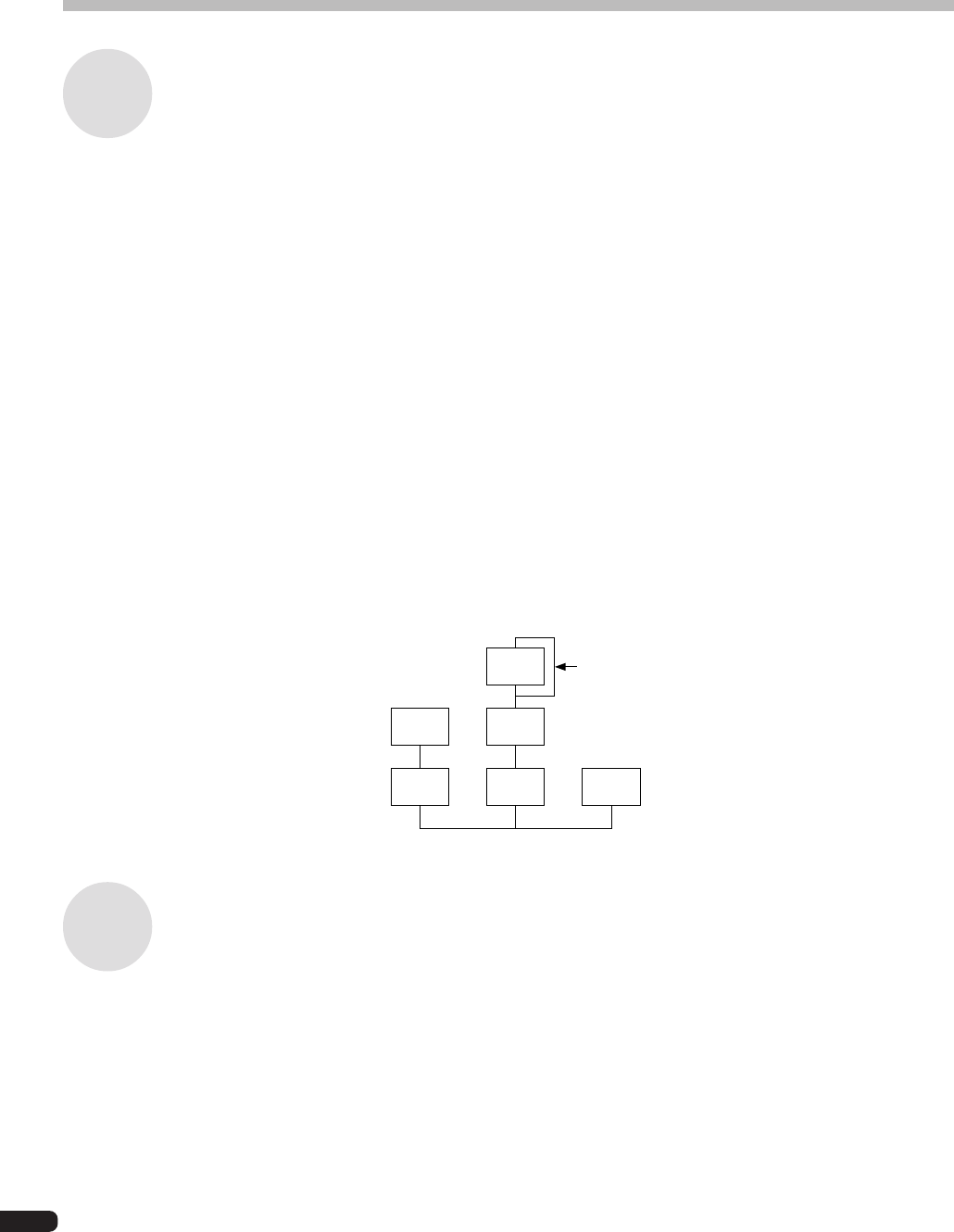
14
FM Tone Generation
While there may be only two ways to combine two operators, when you start talking about
six operators, the number of possible combinations becomes much larger. These combina-
tions of six operators are called “algorithms,” and in both the DX7 series and the PLG100-
DX, 32 of these combinations have been selected that can be used for creating voices.
In an FM tone generator, which operators work as carriers and which work as modulators
are changed dynamically by the algorithms. For this reason, the first thing you have to
know when editing a voice is which algorithm is used by that voice.
The algorithms are numbered from 1 to 32. For information about the 32 algorithms, see
“Appendix, Chart of Algorithms” (→P. 28).
The six operators have also been numbered from one to six to help in distinguishing them.
Let’s take algorithm 28 as an example. In this algorithm, the operators work as follows:
Algorithms
Operator 1 ............. Outputs sounds while being modulated by Operator 2 (Carrier).
Operator 2 ............. Modulates Operator 1 (Modulator).
Operator 3 ............. Outputs sounds while being modulated by Operator 4 (Carrier)
Operator 4 ............. Modulates Operator 3 while being modulated by Operator 5 (Modulator)
Operator 5 .............
Modulates Operator 4 while being modulated with its own feedback (Modulator).
Operator 6 ............. Outputs a sine wave (Carrier)
Feedback
Feedback is a function where a portion of the output of an operator is returned back to the
operator again, where it is used to modulate the operator itself. Using feedback results in a
deeper sound.
Every one of the 32 algorithms has feedback set in one location. Among them there is even
one algorithm, number 4, where the output of three operators as a group is used as feed-
back. When a portion of the output of operator 4 in this algorithm is returned to operator 6,
an extremely deep sound is obtained.
Feedback
(See next section)
2 4
1 3 6
5
Algorithm 28


















